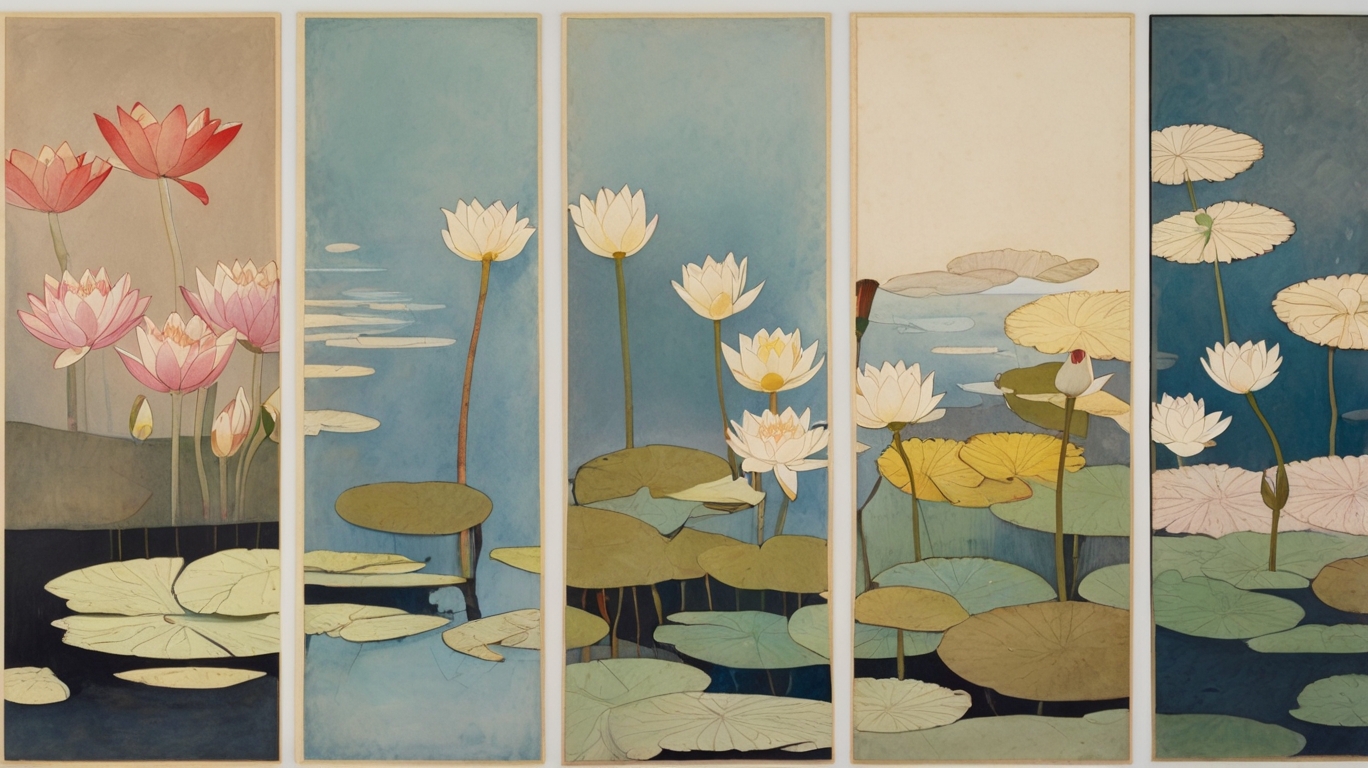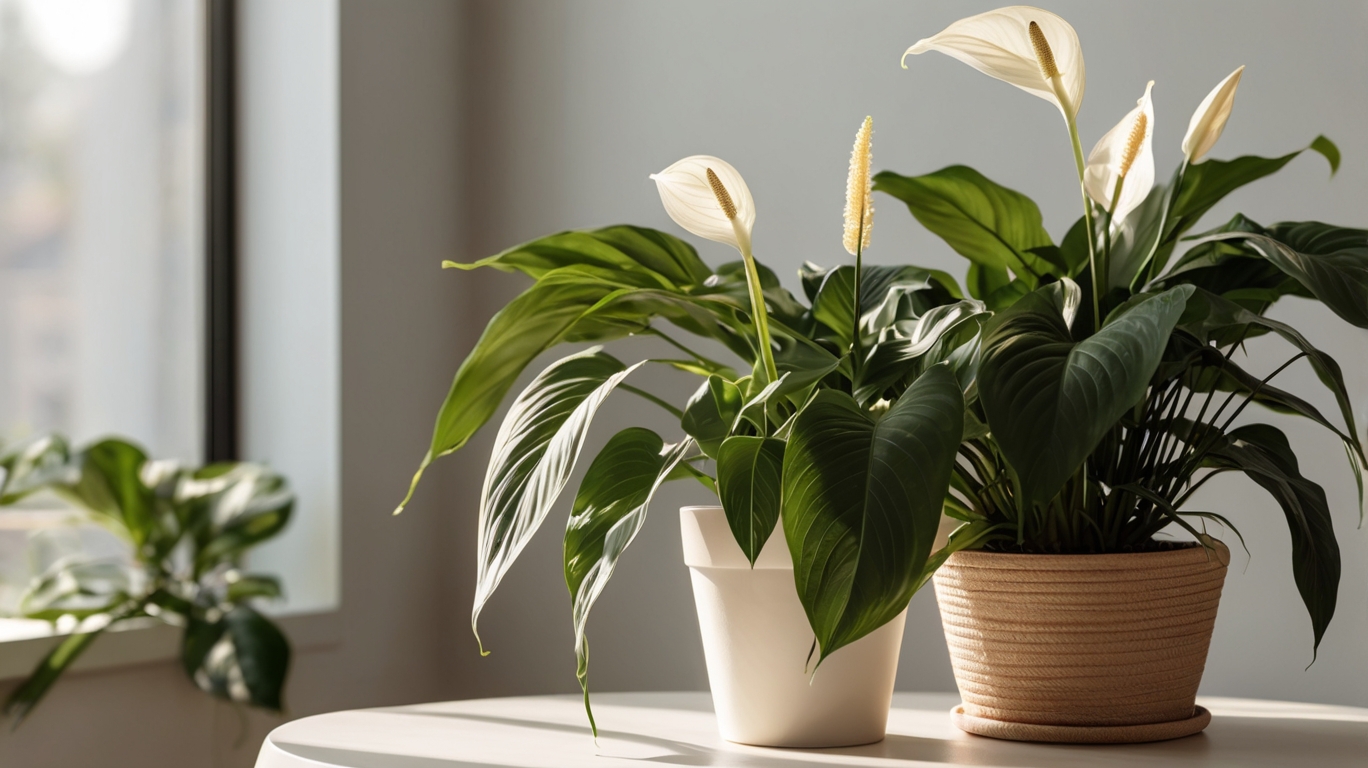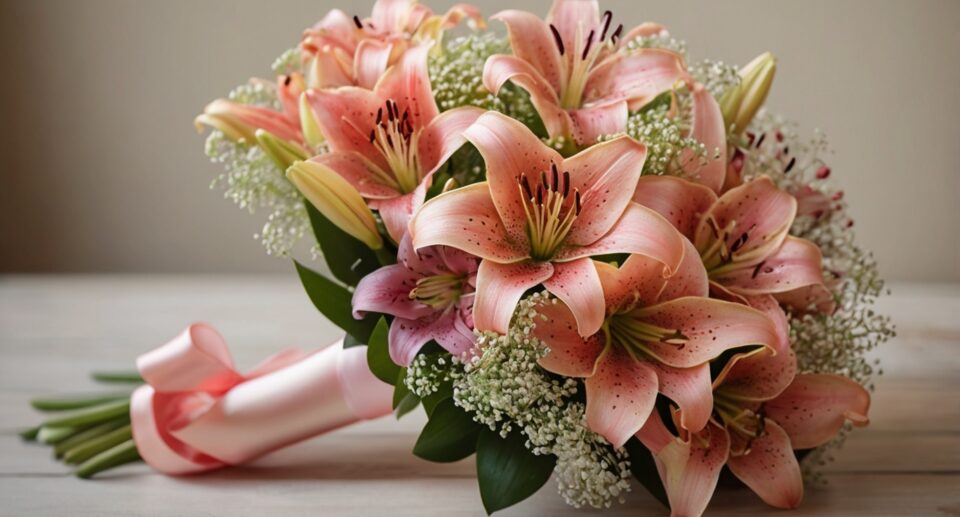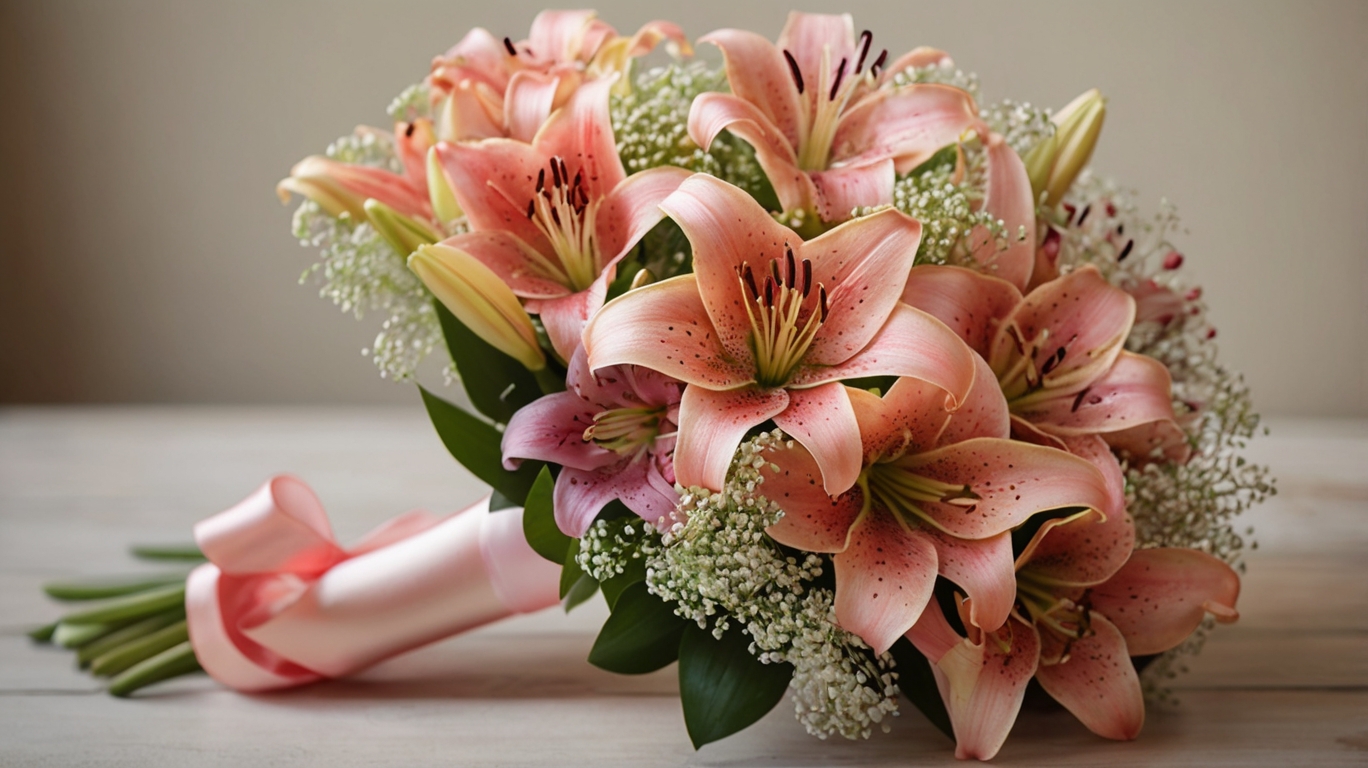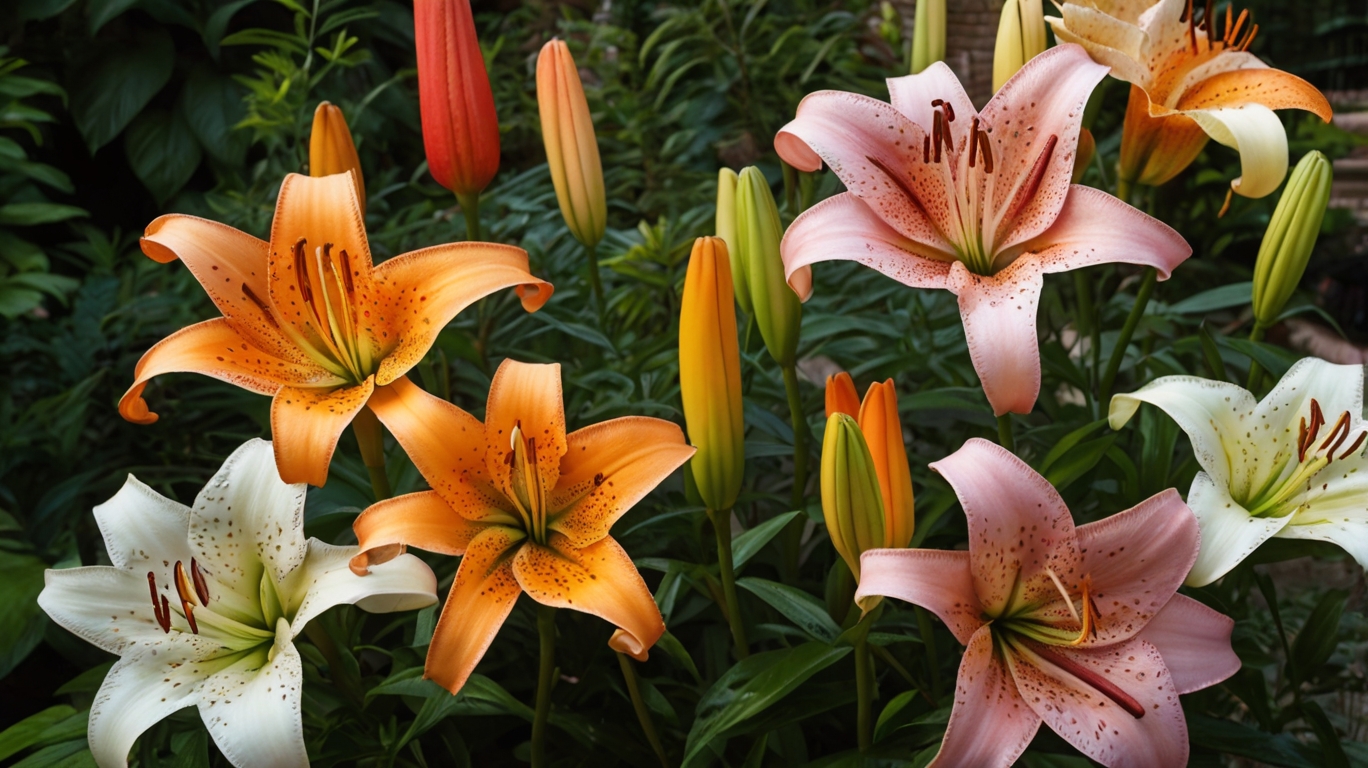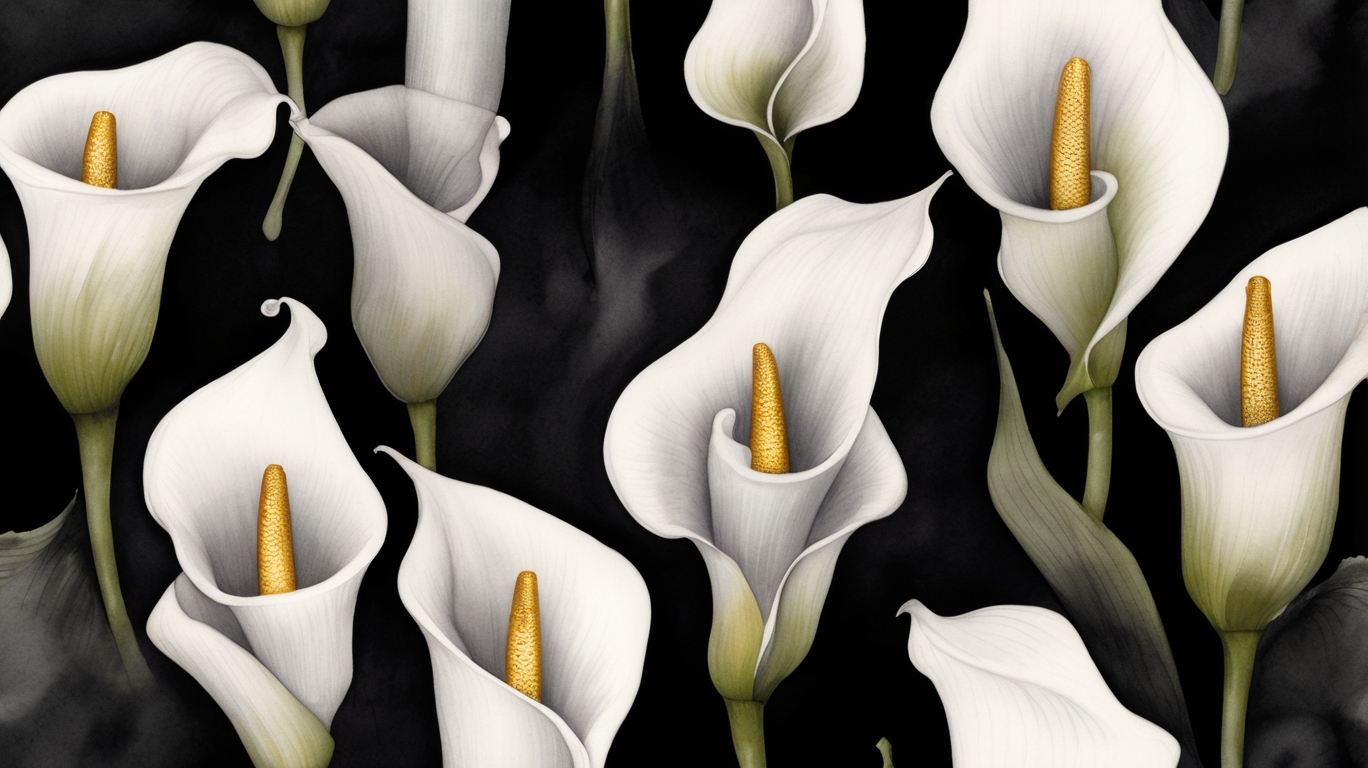“10 Beautiful Meanings to represent Lily Flower | A Symbolism Guide”
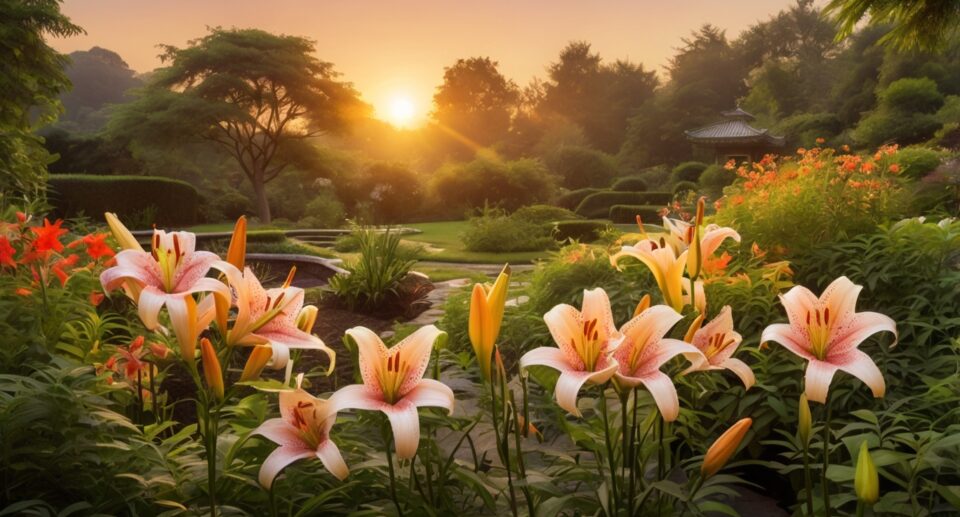
Introduction to the Lily Flower
The lily flower is one of the most celebrated and admired blooms in the world, known for its exceptional beauty and timeless elegance. Native to various regions across Asia, Europe, and North America, lilies have graced gardens, bouquets, and art forms for centuries. They belong to the genus Lilium, which includes a wide array of species with diverse colors, sizes, and fragrances. Lilies are perennials, meaning they return year after year, and they are often cultivated for their ornamental value.
Lilies are characterized by their trumpet-shaped petals, long stems, and delicate fragrances that captivate admirers and pollinators alike. Their blooms can range in color from pristine white and soft pinks to vibrant oranges and rich reds. Varieties like the Asiatic lily, Oriental lily, and trumpet lily each offer distinctive appearances and characteristics, showcasing the rich diversity of the flower and its widespread appeal.
In addition to their aesthetic allure, lilies hold a distinguished place in history and culture. Ancient civilizations revered them as symbols of purity, renewal, and rebirth, while religions and mythologies often incorporated their imagery into spiritual archetypes. Their historical significance dates back thousands of years, appearing in frescoes, manuscripts, and folklore.
Modern uses for lilies extend beyond gardens and floral arrangements. They are popular choices for weddings, funerals, and other meaningful ceremonies due to their deep symbolism. Lilies are also frequently used in perfumes, home décor, and even therapeutic practices, further emphasizing their universal appeal. The lily’s enduring resonance makes it more than just a flower; it is an icon of beauty and meaning woven into human traditions and expressions.
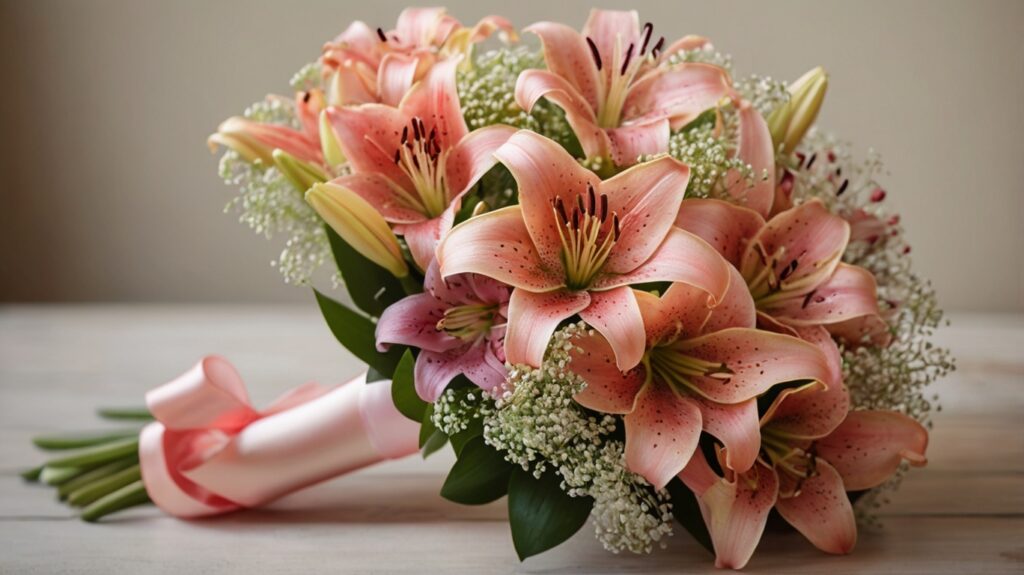
Historical Significance of Lilies
The lily flower carries profound historical significance rooted in ancient civilizations, religious traditions, and cultural customs. Its presence can be traced back thousands of years, making it one of the most historically rich and widely recognized flowers.
Historical records show that lilies were highly valued in ancient Egypt, where they were used as decorative motifs in art and architecture. The white lily, in particular, symbolized purity and innocence and was often depicted on tombs to represent the hope of rebirth in the afterlife. Similarly, lilies appeared prominently in Greek and Roman mythology. According to Greek legends, the lily was said to have sprung from the milk of Hera, the queen of the gods, symbolizing divine beauty and maternal care.
In the Middle Ages, lilies became deeply associated with Christianity, especially the Virgin Mary. The white Madonna lily was emblematic of chastity and divine grace, often represented in religious paintings and tapestries. Artists used lilies to portray Mary’s purity and connection with holiness, reinforcing its status as a sacred flower. The flower’s association with Christian iconography further solidified its symbolism in Western culture.
The Renaissance era saw the lily flower reemerge as a mark of elegance and refinement. Renaissance artworks often included lilies to convey messages of virtue, honor, and spiritual enlightenment. Monarchs and nobility also embraced the lily as a badge of prestige, incorporating its image into heraldry and royal crests.
Beyond Europe, lilies played significant roles in Asian cultures. Ancient Chinese art and poetry celebrated lilies for their beauty and delicate fragrance, linking them to themes of prosperity, harmony, and renewal. In Japan, lilies were tied to tradition and symbolism in festivals and ceremonies, demonstrating their influence across different continents.
Lilies have left an indelible mark on history, entwining themselves with myths, art, and cultural practices from various parts of the world.
Cultural Symbolism of Lilies Around the World
Lilies have been cherished and revered across cultures and continents, each attributing unique meanings and symbolism to this elegant flower. Various societies link lilies to concepts such as purity, renewal, and spirituality, embracing their aesthetic beauty and metaphorical significance.
In Western Culture
In Western traditions, lilies are often associated with purity and innocence. Christianity holds lilies in high regard, especially the Madonna Lily, which symbolizes the Virgin Mary and her virtues of chastity and humility. Frequently, lilies are depicted in religious art as representations of resurrection and new life, further solidifying their connection to spiritual themes.
Eastern Influences
In East Asia, lilies hold distinct cultural relevance. In Chinese culture, lilies are seen as symbols of good fortune and unity. They are often incorporated into wedding ceremonies as wishes for a harmonious marital bond. Similarly, in Japanese traditions, lilies represent humility, union, and spiritual love, reflecting their versatility as symbols across contexts.
Ancient Symbolism
Ancient societies also attributed significant meanings to lilies. In Greek mythology, the lily is linked to Hera, the queen of the gods, and symbolizes motherhood and rebirth. Romans regarded lilies as a symbol of wealth and luxury, using their images in frescoes and coins. This historical importance demonstrates the enduring appeal of the lily flower in classical civilizations.
Modern Interpretations
In today’s culture, lilies continue to convey multifaceted meanings. White lilies are often chosen for funerals to symbolize the restoration of hope and innocence for the departed soul. Orange lilies are associated with passion and confidence, while pink lilies represent love and admiration. The universality of lilies allows their symbolism to adapt to contemporary settings without losing traditional significance.
By transcending geographical and historical boundaries, lilies remain an emblem of human emotions and spiritual ideals, appreciated by diverse cultures for their grace and deeper meanings.
Religious Meanings Associated with Lilies
Lilies have long held deep significance in various religious traditions, symbolizing purity, renewal, and spiritual devotion. Their delicate yet striking appearance has made them an emblem in ceremonies, sacred art, and texts across different faiths. This connection stems from their association with divine qualities and moral attributes.
In Christianity, lilies are particularly revered, often regarded as a symbol of the Virgin Mary’s purity and grace. The white lily, sometimes referred to as the “Madonna Lily,” is frequently depicted in artwork featuring Mary and is said to represent her sinlessness and divine motherhood. Additionally, lilies are associated with the resurrection of Christ, reflecting themes of hope and eternal life. They are commonly seen at Easter celebrations, reinforcing the connection to renewal and rebirth.
In Greek mythology, lilies were believed to have sprung from the milk of Hera, the queen of the gods. This connection imbued the flower with a sense of divinity and creation. Similarly, in Roman mythology, lilies symbolized Juno—the goddess of marriage and childbirth—further linking the flower to themes of fertility, protection, and union.
In Eastern religions, the lily carries different yet equally profound meanings. In Buddhism, lilies are sometimes indicative of spiritual enlightenment and reincarnation. Their bloom signifies the cyclical nature of existence and the quest for awakening. Likewise, in Chinese culture, lilies are often linked to weddings due to their association with harmony and lasting love.
Through these varied beliefs, lilies transcend geographical and cultural boundaries to become a universal symbol of faith, devotion, and the human connection to the divine. Their religious meanings enrich their symbolic lexicon, making them a timeless flower in spiritual contexts.
Lilies in Literature and Art
Lilies have long been a source of inspiration for writers, poets, and artists, often serving as potent symbols within their works. Their delicate beauty and profound symbolism have enabled them to transcend mere botanical representation, becoming metaphors for purity, transformation, and transcendence. In literature, lilies frequently appear in religious texts, poetry, and narrative works, laden with meanings that expand beyond the physical flower.
In Christian literature, lilies are often associated with the Virgin Mary and represent chastity, divine love, and rebirth. The lily, especially the white variety, is a recurring motif in hymns and scriptural references, signifying spiritual enlightenment and heavenly grace. Dante Alighieri, in The Divine Comedy, used the imagery of lilies to symbolize both innocence and divine favor.
Within secular literature, lilies emerge as symbols of fleeting beauty, romantic longing, or even death. William Blake, Emily Dickinson, and Alfred Lord Tennyson incorporated lilies to convey themes of transience, purity, or mournful beauty. Dickinson employs the image of a lily several times in her poetry, often associating it with themes of serenity and quiet dignity.
Artists have similarly embraced the lily’s visual and symbolic allure. In Renaissance paintings, lilies appear frequently, often held by angels or depicted in religious scenes, underscoring divine purity and the promise of salvation. Artists like Leonardo da Vinci and Sandro Botticelli prominently included lilies in their works, linking them with biblical narratives and allegorical themes.
The Impressionists, such as Claude Monet, favored lilies for their aesthetic qualities, capturing their ethereal elegance and interplay of light and shadow in pieces like Water Lilies. Symbolists like Gustav Klimt used lilies to embody sensuality and rebirth in their works. Lilies also figured in Art Nouveau designs, where their fluid shapes and intricate petals reflected the movement’s embrace of natural forms.
Whether framed in written verses or visual masterpieces, lilies convey layers of meaning that resonate broadly. Their enduring presence in art and literature reflects humanity’s fascination with their beauty and the rich symbolism they evoke. As such, lilies remain central in creative expressions across cultures and generations.
Color Variations and Their Symbolic Meanings
The lily flower is celebrated for its exquisite beauty and rich symbolism, which varies significantly depending on its color. Each hue of the lily carries unique meanings, often tied to emotions, virtues, or significant themes.
White Lilies
White lilies are among the most iconic and universally admired. They symbolize purity, innocence, and renewal, often associated with spiritual events such as funerals or religious ceremonies. Their pristine appearance makes them a prominent choice for occasions that celebrate new beginnings or highlight a sense of peace. The white lily is often linked to the Virgin Mary, reinforcing themes of holiness and virtue.
Pink Lilies
Radiating elegance and femininity, pink lilies symbolize prosperity, abundance, and admiration. While often chosen to express love and affection, they are more subtle than red flowers in their romantic connotations. Pink lilies also denote refinement and sweetness, making them culturally significant for occasions like weddings or anniversaries where grace and charm are emphasized.
Yellow Lilies
The bright and cheerful yellow lilies represent joy, positivity, and gratitude. Their vibrant color conveys happiness and warmth, making them ideal for uplifting moments or celebrations of friendship. Yellow lilies are commonly used to communicate encouragement and goodwill, serving as an emblem of hope and renewed energy.
Orange Lilies
Often associated with energy and confidence, orange lilies symbolize passion, enthusiasm, and pride. Their fiery hue evokes boldness and strength, often chosen to honor ambition or achievements. Orange lilies can also signify a strong emotional connection, celebrating moments filled with excitement and vigor.
Red Lilies
Red lilies are a powerful symbol of love and desire, echoing sentiments of romance and passion. Their bold color represents deep emotions and the intensity of relationships. These lilies are frequently associated with romantic gestures, making them as significant in expressing ardent feelings as traditional roses.
Purple Lilies
Purple lilies symbolize majesty and sophistication, carrying connotations of mystery and royalty. Their rich, elegant shade conveys a sense of nobility and admiration. Purple lilies are often used to commemorate accomplishments or honor individuals who exude grace and dignity.
Each color variation adds dimension to the lily flower’s symbolic representation, enhancing its appeal as a meaningful and versatile bloom.
Symbolism of Lilies in Love and Relationships
Lilies hold a profound significance in the realm of love and relationships, often embodying emotions that transcend spoken words. Their graceful petals and enchanting fragrance have made them a timeless emblem of affection and devotion across cultures and generations.
Representation of Purity and Innocence
Lilies, especially white lilies, are closely associated with purity and innocence. In romantic contexts, they symbolize a love that is sincere, untainted, and free from pretense. They often serve as a thoughtful gesture to convey admiration for someone’s inner beauty or to honor the innocence of a newly blossoming relationship.
Expressions of Passion and Desire
While white lilies signify purity, other varieties such as red and orange lilies carry an association with passion and desire. These vibrant blooms are ideal for representing fiery, intense romantic feelings. In relationships, they may mark moments when love evolves into deeper, more passionate connections.
Tokens of Commitment and Fidelity
Lilies are also linked to ideas of commitment and fidelity, particularly in long-term relationships. The perennial nature of lilies, which bloom year after year, mirrors the enduring stability of devoted love. Couples often exchange lilies as a testament to their unwavering bond and shared future.
Symbolism in Wedding and Anniversary Celebrations
Lilies are frequently included in wedding bouquets and anniversary arrangements, where they serve as a beacon of prosperity and enduring partnership. Their presence in these milestones signifies flourishing love and mutual growth, resonating with the essence of harmony and union.
Cross-Cultural Romantic Interpretations
Cultural interpretations often add layers to the lily’s symbolism. In Greek mythology, lilies were a creation of Hera, the goddess of marriage and childbirth, contributing sentiments of nurturing love. In Eastern traditions, lilies are seen as auspicious symbols of happiness and good fortune in romantic unions.
Lilies maintain their universal appeal, making them a versatile choice for expressing complex emotions in love and relationships. Their varied meanings encourage individuals to select blooms that resonate uniquely with their feelings.

Lilies as a Representation of Purity and Innocence
Throughout history, lilies have been closely associated with purity and innocence, making them one of the most symbolic flowers in the realm of botany and culture. Their pristine beauty, often seen in shades of white, embodies simplicity and elegance, which has tied them to spiritual and moral purity in many traditions and societies. The absence of bold or garish colors in certain lily variations further amplifies this association, reinforcing their role as quiet and understated emblems of virtue.
In Christianity, the white lily, often referred to as the “Madonna Lily,” is linked to the Virgin Mary, symbolizing her immaculate conception and sacred purity. This religious connection exemplifies how lilies have been used to convey spiritual innocence and divine grace. Lilies are frequently depicted in religious artwork, often adorning scenes that celebrate chastity and holiness.
The flower’s simplistic yet striking form reinforces the theme of innocence. Its petals, unblemished and graceful, evoke a sense of untouched beauty and purity that resonates across multiple cultural representations. The gentle fragrance offered by the lily complements this symbolism, presenting an image of serenity and natural harmony.
In ancient Greek and Roman cultures, lilies were viewed as symbols of virginity and virtue. Mythological tales often referenced the flower as being decreed by the gods, imbued with qualities reflecting both purity and blessings. This historical narrative has only strengthened the lily’s enduring legacy as a flower that stands for innocence and untainted character.
Moreover, lilies are often presented at ceremonies and occasions that signify new beginnings or transitions, such as weddings, baptisms, and memorials. In these contexts, they not only underscore purity but also highlight the hope and integrity associated with embarking on a fresh path or commemorating a life well-lived.
The Role of Lilies in Funerals and Remembrance
Lilies have long been associated with funerals and acts of remembrance due to their profound symbolism and delicate beauty. Representing purity, the restoration of innocence, and the promise of renewal, these flowers often take center stage in commemorative settings. Their serene aesthetic and subtle fragrance make them an appropriate choice for honoring loved ones, creating a sense of peace and reverence.
In funeral rituals, lilies are commonly chosen to symbolize the soul’s return to a state of tranquility. White lilies, in particular, evoke purity and spiritual rebirth, aligning perfectly with the sentiments of eternal life and the hope offered in mourning. The Stargazer lily, with its bold pink hues, is often associated with celebrating the life and legacy of the deceased, offering a reminder of love and remembrance.
Lilies are frequently included in sympathy arrangements and casket sprays. These floral choices provide quiet support to grieving families, serving as an expression of care and respect for their loss. The flower’s resilient and timeless nature further strengthens its role in carrying emotional weight and solemnity during moments of farewell.
Across religious traditions, lilies hold distinct significance that deepens their connection to memorials and funerals. In Christianity, they are often linked to the Virgin Mary and the resurrection of Christ, symbolizing the promise of eternal peace. Lilies can also be seen as a representation of divine presence, offering solace through their gentle elegance.
The enduring popularity of lilies in funeral practices reflects their ability to convey complex emotions and universal truths. Their elegance speaks to the memory of those who have passed on while providing comfort and hope to those who remain.
Lily Flower in Modern Times and Popular Usage
In contemporary culture, the lily flower retains its profound symbolism while adapting to new contexts and purposes. Its striking beauty and elegance have made it a favored choice for aesthetic decoration, floral gifts, and ceremonial arrangements. Lilies frequently appear in flower arrangements for special occasions such as weddings, anniversaries, and christenings, symbolizing purity, prosperity, and joyous beginnings. White lilies, in particular, hold a timeless appeal in bridal bouquets due to their association with innocence and marital devotion.
Florists and event planners widely recognize the versatility of lilies, considering their capacity to complement diverse themes. The flower’s expanding popularity has been furthered by advancements in horticulture, leading to a wider range of hybrid varieties, boasting vibrant colors such as orange, pink, and red. These newer variants are often employed to convey emotions ranging from passion to admiration, allowing lilies to fit seamlessly into modern expressions of sentiment.
The lily has also found a significant place in home gardening and landscaping. Many individuals favor lilies for their ability to provide striking vertical accents and add to seasonal palettes. Lilies such as Asiatic and Oriental varieties are especially appreciated for their long-lasting blooms and ease of maintenance, making them a staple in backyard flowerbeds and indoor arrangements.
Beyond horticulture and decor, lilies are often referenced in art, literature, and popular media. Their symbolic meanings, including renewal and transcendence, lend themselves well to creative projects and storytelling. Additionally, lilies are used in fragrances and skincare products, valued for their sweet aroma and calming properties.
Emerging trends reveal lilies being incorporated into eco-friendly practices, such as sustainable floral arrangements, underscoring their relevance in modern lifestyles. They embody a marriage of tradition and innovation, continuously evolving to remain pertinent in contemporary society. This adaptability ensures the lasting presence of lilies across cultural and individual expressions alike.

How to Incorporate Lilies in Your Life
Lilies, with their elegant beauty and symbolic depth, can be woven into various aspects of daily life to enhance both surroundings and sentiments. Their presence serves as a reminder of purity, renewal, and love, making them versatile for personal, spiritual, and aesthetic pursuits.
1. Home Décor and Ambiance
- Display fresh lily arrangements in living spaces to create a serene and refined atmosphere. White lilies exude a sense of calm, while vibrant varieties like orange or pink add a pop of energy and warmth.
- Consider indoor potted lilies for a long-lasting, natural touch. They purify the air, contributing to a healthier environment.
- Use lily-inspired artwork—paintings, wallpapers, or textile patterns—to subtly incorporate the flower into the home décor.
2. Gardening and Landscaping
- Lilies thrive in outdoor gardens, offering bold and colorful blooms during the growing season. Plant them alongside other perennials for a layered and textured garden bed.
- Add lilies to container gardens on patios or balconies to enjoy their beauty in smaller spaces.
- Choose specific lily varieties, such as Asiatic or Oriental lilies, based on desired height, scent, and bloom colors.
3. Special Occasions and Gifting
- Use lilies as centerpieces for weddings, anniversaries, or memorials to convey themes like purity, devotion, or remembrance.
- Include lilies in bouquets when gifting to friends or family, choosing colors that align with the sentiment—yellow for gratitude, white for sympathy, or pink for admiration.
- Lilies are especially meaningful for occasions celebrating motherhood, transformation, or milestones.
4. Personal Expression and Wellness
- Incorporate scents of lilies through candles, essential oils, or diffusers to promote relaxation and mental clarity in personal spaces.
- Add lily-centric motifs to clothing or accessories as a subtle nod to their deeper meanings and personal connection.
- Craft pressed lily petals into DIY projects like bookmarks, journals, or resin art to preserve their beauty and symbolism.
By embracing lilies in everyday life, one can tap into their timeless ability to transform surroundings while capturing emotions and intentions.


